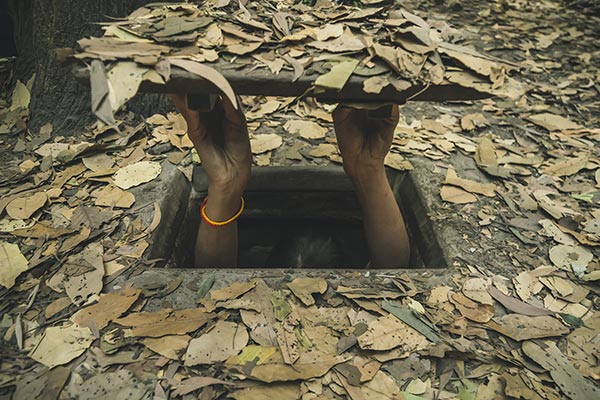What is a spider-hole and what are its survival uses?
Wednesday, October 30, 2019 by Darnel Fernandez
http://www.bugout.news/2019-10-30-what-is-a-spider-hole-survival-uses.html

Preppers always find new and creative ways to improve their survival preparations just in case SHTF. One of these interesting ways is reviving an old World War II tactic: the spider hole. Making a spider hole is a simple and effective way to conceal your position and observe your immediate surroundings. Having this edge over other people can mean the difference between life and death. (h/t to ReadyNutrition.com)
As sneaky as a spider
A spider hole is a type of one-man foxhole primarily used by the military. This structure earned its namesake due to its striking similarities to the home of a trapdoor spider. This arachnid burrows into the ground and constructs a camouflaged “trapdoor” hinged with silk. Throughout the night, the spider patiently waits for an unsuspecting victim to walk close to the hole. Once vibrations have been detected, the spider rushes out with lighting speed, dragging its next meal back into the burrow.
If SHTF, being significantly more prepared than the rest of the community can put a big red target on your head. Looters will do anything to get what they need. Because of this, you need to be prepared to hide all your valuables as well as yourself to stay alive. (Related: Prepping tip: How to hide your valuables in plain sight.)
If you find yourself in a bind, a well-built spider hole can give any pursuer the slip. Like the trapdoor spider, you can even press the advantage and perform a surprise counterattack on unsuspecting individuals when they think you’re long gone. You can also construct multiple spider holes to misdirect opponents, causing them to waste bullets on what they thought was your hiding spot.
Generally, a spider hole is used for scouting and observation. The discreetness of the lid and a small observation crack can help you watch your surroundings and keep your property safe. However, take note that a spider hole is not built for long-term hiding and is not a particularly defensible position without giving away your location.
Spider holes, thankfully, require little effort to construct because of their small size and minimal material requirements. Here are a few steps to create your own hidey-hole:
- Pick the right spot. Just like choosing a bug-out location, picking out the right spot to build your spider hole can make a huge difference in effectiveness. As the spider hole’s main purpose is for surveillance, placing it near trees and bushes is not ideal because they might obstruct your view of the surroundings. Ideally, you should place your hole in an area where retreating is easy.
- Dig a circular hole. This hole should be big enough to fit your whole body along with a few other essential supplies. You can even go for a much bigger hole if you want to store more things underground. If rainfall worries you, you can add in a pallet at the bottom of the hole for you to stand on. Most rainfall won’t fill your hole more than a few inches, if that.
- Camouflage the lid. Probably the most important step, there’s no point in having a hiding place if enemies can identify it with a single glance. The lid should be made of light but resistant material that is easy to camouflage. Depending on the location, you can incorporate a lot of the colors and material available in your immediate surroundings to construct a lid that blends in well.
In any situation, even if you do have the upper hand, you should always be prepared for anything. Having an emergency retreat nearby can help you stay safe and alive.
SelfDefense.news has more stories on keeping yourself and your family safe from any potential threat.
Sources include:
Tagged Under: Tags: bug in, concealment, emergency escape, foxhole, hidey hole, Home Defense, home security, preparedness, Preppers, prepping, retreat, self-defense, SHTF, spider hole, survival, temporary shelter, trapdoor spider

